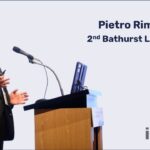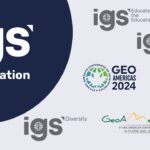Three new task forces have been established by the IGS Council.
IGS Recognitions, IGS Structure, and IGS Credentialing groups and their respective chairmen were approved at a recent IGS Council meeting.

IGS Recognitions is chaired by Edoardo Zannoni and aims to review the IGS Awards to consider widening the scope and categories currently available for IGS recognition. This includes possibly naming new awards after individuals or groups.
Mr Zannoni said a review was needed to ensure the awards remained relevant and that they appropriately recognized members’ exceptional input into how geosynthetics are understood and used worldwide today.
“The IGS Awards have always been an important way to celebrate the outstanding and innovative work of our members. As the industry evolves so must the way we honor the contributions made,” he said.

IGS Treasurer Ian Fraser will chair the new IGS Structure task force. Its focus is reassessing the current structure of the IGS from members to Council and developing a gap analysis with the Society’s present and future goals in mind.
Areas reviewed will include shared workload and responsibility, vertical transparency, the protection of democracy, succession planning and the length of commitment required of participants.
Mr Fraser said: “It is vital our organizational structure is regularly reviewed to ensure it is meeting its purpose for members and the IGS’s wider aims. I look forward to leading this task force to ensure we better meet governance requirements and maintain a robust operation for the next 20 to 30 years.”

Chaired by Sam Allen, IGS Credentialing will review current geosynthetic and non-geosynthetic credentialing and certification programs, their revenue potential and infrastructure requirements. Consideration will also be given to whether the IGS should facilitate its own certification program.
He said: “The IGS has always been a trusted industry resource in providing geosynthetic-based education. Our Ambassador and Educate the Educators programs, as well as our IGS Technical events respond to the general lack of university educational curriculum specifically dedicated to geosynthetics and their applications.
“Proof of geosynthetics education and expertise via credentialing may be a natural extension for many of these programs, as well as other IGS programs to come. I look forward to working with my team to ensure we can continue offering documented geosynthetics education in the best way possible for our members and the wider public.”
For further information or to provide feedback on any of these task forces, email the IGS Secretariat Manager Elise Oatman at igssec@geosyntheticssociety.org.






















